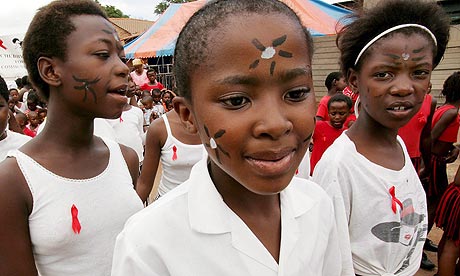
More than 330,000 children are still being born with HIV around the world every year, even though there are proven ways to prevent them becoming infected that would also save the lives of their mothers, an international conference has heard.
Since 1994 it has been known that pregnant women infected with HIV can be given treatment that will block the transmission of the virus to their baby at birth. But although rich countries acted promptly and now have few babies born with HIV, progress in developing countries is very slow.
Although there is a UN-set goal to end new infections in babies by 2015, "we are totally off target," Chewe Luo, senior adviser on HIV and Aids at Unicef, told the International Aids Conference in Washington, DC. "The analysis we have done is that at most we are reducing these infections by 10% each year. [That means] 330,000 children are acquiring new infections each year.
"Part of the problem is that we have focused our interventions on the prevention of infection from mother to children and we have not looked at how we can transform our programmes to identify those women who need treatment for themselves."
Early on, women were given drugs during pregnancy and then different drugs in labour to prevent the virus passing to their baby at birth. The baby was then also given a short course of drugs. It was complicated – and ineffective for the many women who only went to the antenatal clinic once.
Also overlooked was the need of the pregnant women for treatment themselves. Only just over half – 57% – of women in sub-Saharan Africa who need treatment to keep them alive are on it. Many pregnant women have such high levels of virus in their bodies when they walk through the antenatal clinic door that they will die within two years – leaving the new baby and their other children without a mother and effectively orphaned. In Zambia, a study showed that 68% of HIV-positive women had such a high viral load that they would not survive two years without treatment.
"We have made it too difficult – so difficult that women who are accessing healthcare at the lower-level healthcare facilities don't have access to these interventions," said Luo. "We have to make things simpler."
Malawi has done so. It has become the first developing country to adopt a new treatment plan (called B+), under which pregnant women with HIV are put on antiretroviral drugs for life straight away – ensuring their health and preventing the infection passing to the baby. Clinics that see pregnant women now test and treat anyone who is HIV-positive. Since July last year, there has been a sixfold increase in the numbers of pregnant women on treatment.
Botswana and Rwanda are now also moving to the plan B+ model, and it is under discussion in South Africa, Zambia and Cameroon. "Part of the conversation is: where is the money going to come from?" said Luo. The cost of the recommended two-drug pill has dropped through negotiations with drug companies by the Clinton Foundation from $180 to $125 per person per year.
However, plan B+ comes with a global price tag that is $300m more than the current estimate for treatment costs in hard-hit countries. But people with HIV on treatment become far less likely to infect their partners, as well as their babies, so the additional outlay may be considered a good investment.
"We are talking to the Global Fund [to fight Aids, TB and malaria] and Pepfar [US president's emergency plan for Aids relief] to see if we can support these countries that want to make that transition," said Luo. "If we want to have more effective programmes, we do need their support."

